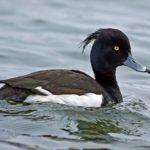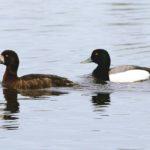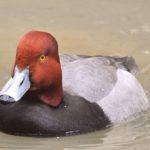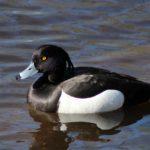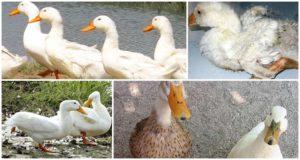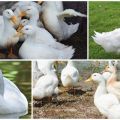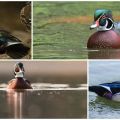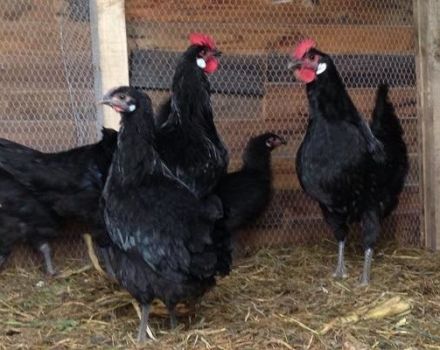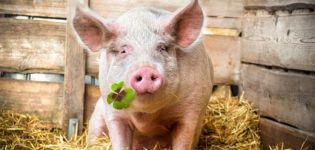The appearance of a crested duck and what the black duck feeds on, habitats and enemies
Tufted Crested is a waterfowl that spends most of its life on the water and dives deep in search of food. Birds live in large flocks, settle near water bodies, fly to warm lands for wintering. In the second year of life, they form strong pairs that do not break up until death. The duck have short wings, it is difficult for them to fly, but this feature does not prevent the birds from diving.
The appearance of a black crested
The Tufted Duck is a small waterfowl from the Duck family. Its other names are nigella, white-sided. Ducks live collectively, in large flocks. Drakes have a very beautiful appearance: a shiny black plumage with a purple tint. On the sides of the males there are snow-white stripes, passing to the belly and bottom of the wings, and on the small head there is a combed back crest (several hanging feathers).
Females have more restrained tones in the color of the feathers, the black color is diluted with brown, and there is no snow-white side strip at all, the belly has a chocolate tint. The crest of ducks is slightly shorter.
In the wild, the crested duck lives for about 20 years. Ducks spend most of their time in the water. They get food by diving. They can dive to a depth of 4 meters. Take off from the surface of the water after a short run. Birds fly fast. They can also take off from land. This duck does not emit a typical quack. Females croak or snort. Drakes emit a sound similar to the "gun-gun" whistle.
Habitat
Crested Duck is a waterfowl and diving bird. Such ducks settle near lakes, rivers, ponds, artificial reservoirs with fresh water. Avoid swamps and floodplains. This migratory bird hibernates in warm regions. In spring, it arrives in various regions of the temperate zone of Eurasia. Numerous flocks of ducks have been seen in Belarus, Ukraine and Russia.
Birds settle in different types of water bodies, but prefer fish farm ponds where black-headed gulls live. Ducks choose deep lakes and reservoirs, with an abundance of fish, insects, emerging and coastal vegetation.
Migrations
The crested duck is a migratory, transit-migratory bird species. They arrive from warm countries in late March and early April. They appear on water bodies of the temperate zone when there is no ice on the surface of the water.At the end of May, ducks build nests and hatch chicks. After a month, ducklings hatch from eggs. In the second month of life, they can already fly.
All ducks prepare for the flight in September. First, the migrations begin. They precede the flight to wintering grounds. Autumn departure occurs at the end of October, beginning of November. Blacken hibernates in large flocks, several thousand birds, in the subtropical zone, that is, on the coasts of France, Holland, Belgium, the British Isles, as well as on the coasts of the Black, Mediterranean, Caspian Sea and even in North Africa. A small percentage of ducks remain for wintering in the temperate zone of Eurasia.
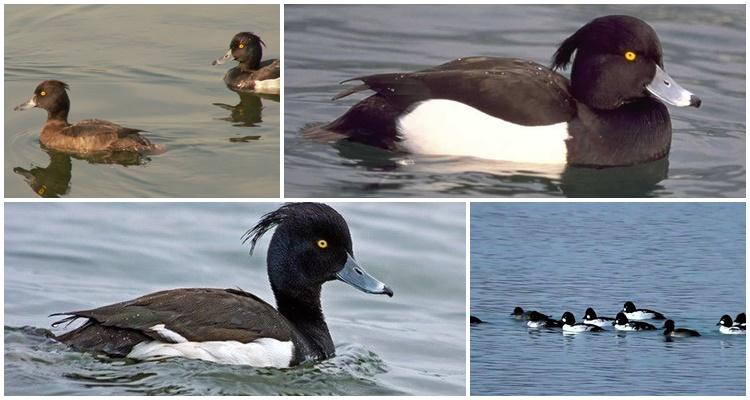
What do they eat
The main diet of birds is food of animal origin. Ducks eat insects, mosquitoes, dragonflies, frogs, molluscs, small fish. With a lack of animal feed, birds feed on vegetation. Chernyad dives well and can reach fish from a depth of 3-4 and even 10 meters. A duck can stay under water for almost a minute.
Duck breeding
Birds are ready for breeding 1-2 years after birth. The crested duck finds its mate during the winter. In early April, birds arrive in Eurasia, in places of the temperate climatic zone, until mid-May they keep one common flock. Pairs are separated when the ducks sit on the nests. Crested Duck starts nesting later than other species of ducks.
Birds begin to nest in late May, early June. The nesting period depends on the water level as well as the availability of suitable nesting sites. Ducks prefer to settle under the protection of black-headed gulls. Birds nest together or singly. They can form colonies of twenty pairs or more. They often settle near river terns and black-headed gulls.
Nests are arranged on the ground, no further than 50 meters from the reservoir. Dry grass, particles of reeds, twigs, feathers, fluff are used as building materials. Nests are arranged in well-sheltered and inconspicuous places, in dense thickets of tall coastal vegetation, in blackberry bushes, in reeds, reeds, sedge. Bumps and small islands are often chosen for nesting. The nest is bowl-shaped, about 30 cm in diameter and almost 16 cm deep.
The clutch contains 6-11 eggs, and sometimes even 20-27 eggs, however, belonging to different females. The shell is gray-green, matte, smooth. Eggs weigh 53 grams. They are 6 centimeters long and 4 centimeters in diameter. The female lays eggs in late May or early June.
Incubation lasts almost a month (23-27) days. In case of danger, females often leave the clutch and build new nests. During the season they manage to feed one brood. Nesting ends in July.
Only the female takes care of the hatched chicks. A duck with ducklings leaves the nest and goes to places where there is more food. In the first days of life, chicks peck insects and plants from the water. Grown up ducklings dive for food. Chicks become independent in the fifth week of life. At the age of two months, in August, young ducks rise on the wing. In October-November, together with their parents, they fly to warmer regions.
Natural enemies
Crested ducks are often the prey of hunters. These birds have tasty, albeit fishy, fatty meat. The natural enemies of the crested duke are crows that destroy eggs and eat small ducklings, as well as herring gulls. Chicks that cannot fly often become prey for predators (foxes, wolves), so the entire brood rarely survives to adulthood. Crested ducks are hunted by birds of prey (hawks, kites).
